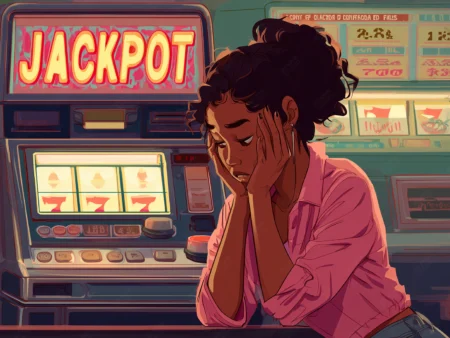Everyone’s heard the stories: a €/$ 10 ticket scratched on a lunch break turns into a six-figure payout. It makes players wonder if there’s a hidden trick, a code under the foil. The truth? Scratch-offs are built on probability, not magic.
That doesn’t mean you’re powerless. Just like picking a slot with the right RTP or steering clear of sucker bets at the tables, you can make smarter choices with scratch tickets. Understanding the odds, instead of chasing patterns, is the difference between torching a bankroll and stretching it for real entertainment, with a genuine chance at a win.
This guide breaks down how scratch-off odds actually work, how to identify the best scratch offs in your state, and the scratch-off strategy that gives you the most value. No myths. No hype. Just practical advice from years of sizing up odds across both lotteries and casino games.
Table of contents
How Scratch-Off Odds Really Work
Are Scratch-Offs Random?
Scratch-offs feel random when you’re scratching the foil, but the odds are decided long before they hit the counter. Each game has a fixed number of winning and losing tickets baked into its print run. Once they’re distributed, it’s all about when and where those tickets land, not a live shuffle happening in real time.
The best comparison is slot RTP. A slot advertised at 96% return-to-player isn’t paying you €/$ 96 for every €/$ 100 you spin. It’s a long-term average across millions of rounds. Scratch-offs work the same way: the game has fixed odds, but your individual ticket is just one pull from the larger pool. That’s why two players can each buy ten tickets from different rolls and walk away with completely different results.
Scratch Ticket Odds Explained
This is where players often get misled. If a scratch card advertises “1 in 4 odds,” it doesn’t mean every fourth ticket wins. It means that, across the full print run, roughly 25% of tickets pay something back. That payout could be another ticket, €/$ 5, or a jackpot, and the distribution isn’t even.
Variance is the wild card. You might hit two winners in a row, or you might burn through ten without a return. The odds describe the game design, not your personal session. That’s why understanding scratch ticket odds, just like knowing the difference between true odds and payout odds in casino games, keeps your expectations in check and stops you from chasing patterns that don’t exist.
How to Pick the Best Scratch-Offs
Do Expensive Tickets Have Better Odds?
If you’ve ever stood at the counter debating between a €/$ 1 scratcher and a glossy €/$ 20 ticket, here’s the reality: price usually correlates with odds. The cheaper the ticket, the worse your chances of a meaningful win.
- Most €/$ 1 cards carry overall odds in the 1 in 5 to 1 in 8 range, with top prizes capped at just a few thousand.
- Step up to €/$ 20 or €/$ 30 tickets and you’ll often see odds closer to 1 in 3, with jackpots that stretch into the millions.
The math is simple: you’re paying more upfront, but your chance of hitting something worthwhile goes up. That doesn’t mean expensive tickets guarantee profit, far from it. Like high-volatility slots, they can drain a bankroll quickly but deliver far more upside when you connect. If you’re playing for entertainment and a genuine shot at a big prize, premium tickets are usually the smarter buy.
Researching the Best Scratch-Offs in Your State
Another overlooked edge? Publicly available prize data. Most state lotteries publish details on each game, including how many jackpots remain unclaimed. That lets you compare two scratch-offs at the same price point, and instantly see which one still has life in it.
For example:
- A €/$ 10 game launches with five €/$ 1 million prizes. Four are already claimed. Your odds of landing that jackpot are slim.
- Another €/$ 10 game still has three or four top prizes left. That’s the better play.
This is where players separate luck from strategy. You can’t change the randomness of your individual ticket, but you can improve your position by picking the best scratch offs based on available data. Think of it like checking slot RTP or progressive jackpot pools before spinning, the information’s out there, and smart players use it.
Scratch-Off Strategy That Actually Helps
Buy Multiple Tickets From the Same Roll (Myth vs Reality)
One of the most persistent player theories is the “singleton method”: buy a string of tickets from the same roll and you’ll eventually hit the designed winners. The thinking goes, if the odds are 1 in 4, then buying four consecutive tickets should lock in at least one win.
Reality check: it doesn’t work like that. Winners are scattered randomly throughout the roll, not evenly spaced. You might get lucky with back-to-back wins, or you could burn through ten tickets without a payout. Buying from the same roll is less about guaranteed wins and more about bankroll strategy, you’re simply increasing volume in the hope of catching one.
Stick to a Bankroll, Don’t Chase Losses
This is where casino discipline separates seasoned players from reckless ones. Every scratch-off session should start with a hard limit. Think of it like a slots session: once your bankroll is gone, the session ends.
Chasing losses is the fastest way to spiral. Buying ticket after ticket under the belief that “the next one has to hit” will torch your balance. The reality is simple: scratch-offs carry a long-term negative expectation. A smart scratch-off strategy isn’t about beating the odds, it’s about protecting your bankroll so you can enjoy the game without tipping into frustration.
Second-Chance Drawings Are Overlooked Value
Here’s a play even experienced gamblers often ignore: second-chance drawings. Most lotteries allow losing tickets to be entered into extra draws for cash or bonus prizes.
Think of it as the lottery’s version of a casino loyalty program. The main game didn’t pay, but you still get a free shot at rewards. It takes a little effort, scanning barcodes, submitting codes online, but if you’re buying scratchers anyway, skipping second-chance drawings is like leaving free EV on the table.
Biggest Mistakes Scratch-Off Players Make
Scratch-offs look simple, but plenty of players fall into the same traps. Almost all of them come down to mindset.
Buying Random Tickets Without Checking Odds
Walking into a shop and grabbing the flashiest card on the rack is the lottery equivalent of blind-betting a roulette wheel. If you don’t know the odds or whether jackpots are still unclaimed, you’re already playing at a disadvantage. Checking odds data is the easiest edge you can give yourself.
Ignoring Second-Chance Drawings
We mentioned this earlier, but it’s worth repeating: throwing away non-winners without checking second-chance opportunities is wasted value. If your lottery runs them, every “losing” ticket is still another shot at a payout. For frequent players, this adds up to a surprising amount of extra EV.
Treating Scratch-Offs Like an Investment Instead of Entertainment
This is the mindset mistake that costs players the most. Scratch-offs are designed to return less than they take in, that’s how jackpots and state programs are funded. The moment you start treating them as an “investment strategy,” you’re setting yourself up for disappointment.
It’s no different from casino players chasing sucker bets like the five-number bet in roulette or betting every spot on a keno card. The house edge doesn’t disappear just because you’re chasing. Smart players manage expectations, avoid the traps, and treat scratch-offs for what they really are: entertainment with a slim chance of a payday.
Industry Insight, Scratch-Offs vs Casino Games
Scratch-offs are, in many ways, the offline cousin of low-RTP slots. Both are designed for entertainment first, not long-term profit. The difference? Slots at regulated online casinos give you transparency. You can filter games by RTP, test them in demo mode, and see volatility profiles before you ever spin. Scratch tickets? You’re buying blind unless you’ve done the extra homework to check prize data.
That’s why experienced players always think in terms of probability, variance, and expected return. Whether it’s a scratcher, a high-volatility slot, or a table game with a known house edge, the math decides the outcome over time. Short-term swings can be brutal, that’s variance doing exactly what it’s supposed to. Over the long run, the game design dictates the payout.
Viewing scratch-offs through the same lens as casino games keeps your expectations realistic. You’re not trying to “crack” the system, you’re looking to maximize entertainment while giving yourself the best chance of catching a payout. That mindset is what separates casual dabblers from players who actually extract value from their sessions.
If you want games where the math is transparent, check out our guide to high RTP slots, you’ll know exactly what return to expect before you even spin.
Final Thoughts: Playing Smarter, Not Harder
There’s no secret formula for cracking scratch-offs. Every ticket is still a gamble, and the odds will always tilt toward the lottery. But you can play smarter. Choosing games with better odds, checking whether top prizes are still in play, and using second-chance drawings all help you stretch your bankroll and give yourself more chances at something real.
Scratch-offs work best when you treat them as entertainment, the same way you’d approach a night on the slots or a run at the roulette wheel. The thrill is in the possibility, not the promise.
At Go Spin Casino, our goal is to help players make sharper gambling decisions, whether that’s picking a scratch-off at the corner shop or filtering for high RTP slots online.
FAQs
There isn’t one. Scratch-offs are designed with fixed odds, and no method guarantees a win. The smartest play is choosing tickets with stronger odds, checking if jackpots are still unclaimed, and using second-chance drawings to get extra value.
Usually, yes. A €/$ 20 ticket often has odds around 1 in 3, while €/$ 1 tickets might be closer to 1 in 7 or worse. Higher-priced tickets also carry bigger jackpots, though they’ll eat through your bankroll faster.
Start by reviewing your lottery’s official prize data. Most state lotteries publish how many jackpots remain. Choosing games with top prizes still in play gives you better value. Price also matters, mid- to high-tier tickets tend to offer the best mix of odds and payouts.
Each ticket feels random, but the odds are set at the game level. Winners and losers are distributed throughout the print run, not evenly spaced. That’s why buying several tickets in a row doesn’t guarantee a win.
It depends on your bankroll. Buying multiple tickets from the same roll increases volume but doesn’t change the underlying odds. The smarter approach is to decide what you’re comfortable losing and stick to that limit, whether it’s one ticket or ten.












































